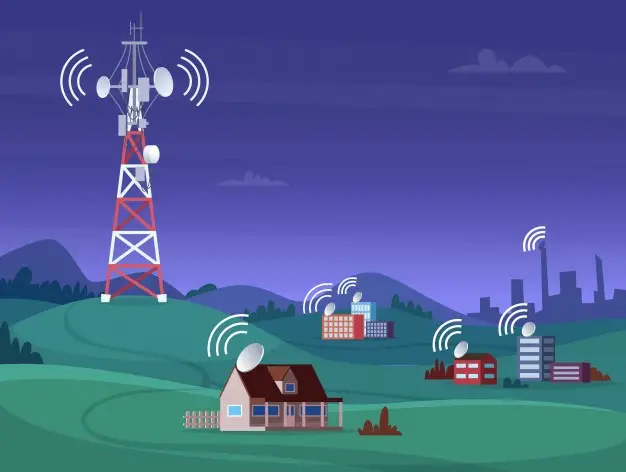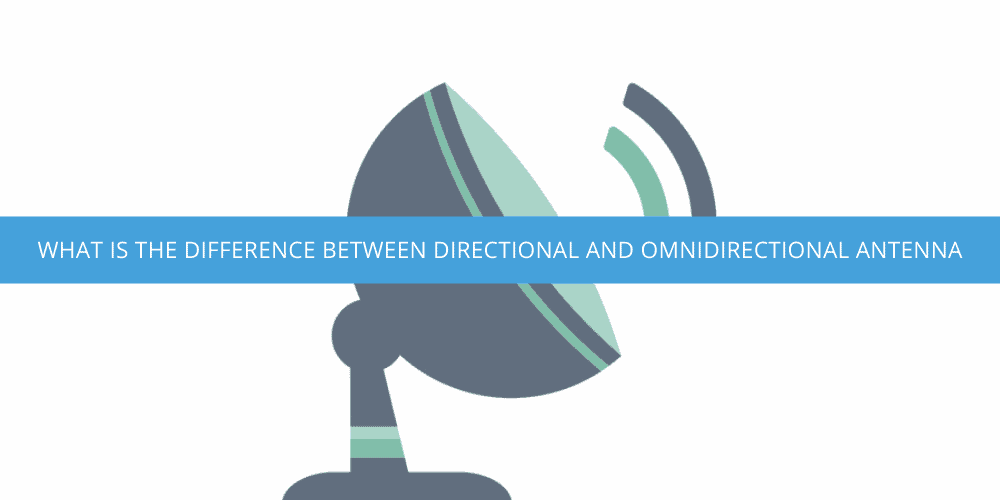Omnidirectional Antennas receive signals from all directions, while directional antennas receive the same from just one. But the difference between the two runs deeper than that. While the innate function of the two kinds of antennas is the same; transmit and receive signals, they are vastly distinct in many noteworthy ways.
Let’s see what sets one antenna apart from the other, and which one is the best under what circumstances.
See here the list of the best omnidirectional antenna in the market this year and do omnidirectional antennas really work?

Omnidirectional Antenna V/S Directional Antenna
Both the antennas perform the same function, transmit or receive signals.
The difference lies in the definition, the radiation pattern, and the signal strength of the two.
Definition: Omnidirectional antennas receive signals or radiate RF signals from, or to all directions.
Think of a light bulb in the middle of a dark room. When the bulb glows, the light is emitted to all of the directions equally. This is essentially how an omnidirectional antenna works. They have a 360 degree coverage.
Once installed, they can receive signals from all directions equally, or transmit the same. These are installed where the coverage requirement is wider, or all around the epicenter.
Such antennas are usually housed in a vertical frame. This arrangement is called a radome. RVs, cars, boats, ships, or any other moving vehicle is an excellent spot to install an omnidirectional antenna. Such antennas can also come to good use, when you want to catch signals from a specific transmitter, but are unsure about the precise location of it.
Both the transmission and reception work the same way.
On the other hand, directional antennas are focused on one direction. This means such antennas can only receive or radiate signals from or to one direction. In this case, think of a flashlight. You can shed the light of a flashlight to one direction at a time only. This is how a directional antenna works. At times, an antenna is installed specifically to receive signals from a station, situated in a particular direction.
This is where a directional antenna can come in handy. The idea is, by not pulling signals from other directions, the antenna can focus on one, with efficiency. It essentially establishes a point-to-point nexus. The directional ones can be used, when you know the precise location of the signal transmitter. The device could then be pointed towards the origin. The alignment is the key here.
Radiation Pattern: The radiation pattern of omnidirectional antennas and directional antennas differ. The omnidirectional ones radiate 360 degrees horizontally.
Horizontal radiation renders signals in all directions, while the signal coverage vertically differs. (1)
On the other hand, directional antennas radiate the RF signals to a specific direction. The effectiveness is marked by focusing the radiation at one point and increasing the coverage. The untargeted directions received little to no radiation. This pattern forms the shape of a cigar and is called a lobe. Directional ones have small lobes.
Since such an antenna does not receive signals from the periphery, the lobes have near to no function in terms of reception and transmission.
Signal Strength: Due to the varying construction, and essentially different functions, the signal strength that an omnidirectional and a directional antenna transmit or receive differ tremendously.
The analogy of a bulb and a flashlight could be used again. A bulb can radiate light in all directions at the same time. While it does have wider coverage, its strength to focus on a specific object in complete darkness is zero.
For instance, if you want to find an object in the darkness, you cannot turn to the bulb because it has weak lighting, let alone a focused one. However, a flashlight has high strength. But it can only focus on a single direction. This is how omnidirectional and directional antennas work. The former can send signals all around. Due to its wide coverage, the signal strength is awfully weak.
Meanwhile, a directional one concentrates the RF signals to a singer spot, or direction, thus, its signal strength is relatively stronger. Its coverage is longer and focused. The two antennas also vary in terms of shape. The flatter an omnidirectional antenna, the wider coverage, the stronger the gain. (2)
Pros and cons of both
Directional TV antenna (pros)
- Can receive stronger signals from a specific direction
- Less prone to interference from other signals or physical obstructions
- Can be more effective at receiving signals from long distances
Directional TV antenna (cons)
- Needs to be pointed accurately in the direction of the transmitter
- May have a limited coverage area
- May require more precise installation and alignment
Omnidirectional TV antenna (pros)
- Can receive signals from multiple directions
- Does not need to be pointed in a specific direction
- Can provide coverage for multiple devices
- Easy to install
Omnidirectional TV antenna (cons)
- May receive weaker signals than a directional antenna
- More prone to interference from other signals or physical obstructions
- May not be as effective at receiving signals from long distances
Conclusion
Omnidirectional antennas and directional antennas differ in more ways than one, hence proven. However, if you’re looking for a cue that answers which one is better, then that would depend upon the use that you want an antenna for.
If you want to attract phone signals, then omnidirectional antennas win the day. However, if you want to receive or transmit signals to a specific spot, and know the precise source of power, then go for a directional one, as it can give a vastly stronger signal base.
References
(1) 360 degrees horizontally – https://filmora.wondershare.com/virtual-reality/what-is-360-degree-camera.html
(2) RF signals – https://www.sciencedirect.com/topics/computer-science/radio-frequency-signal

